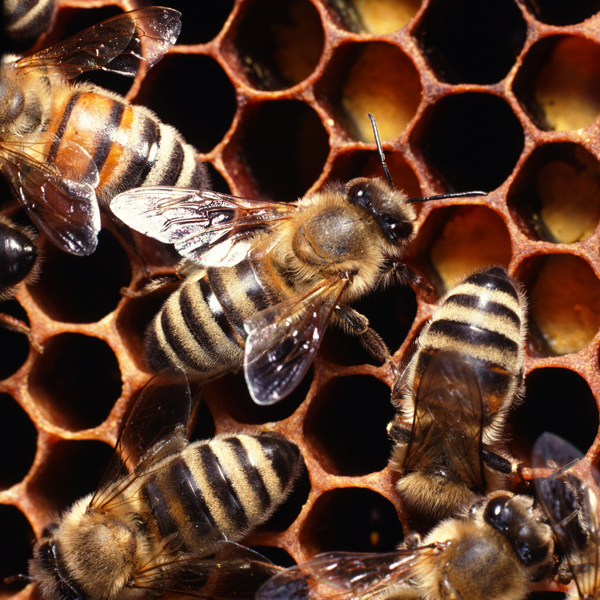USU biologists discover two new species of bees
“Finding new species is an exciting diversion. It makes you feel like a child again,” said David Tanner, a biologist from USU.
Recently, two new bee species were discovered in the Ash Meadows National Refuge in Nevada. The discovery came about when James Pitts, an assistant professor at USU, and Tanner were approached two years ago by Bio West, a biological consulting firm, to be the pollinator experts for a project. Bio West was contacted by Ash Meadows because the refuge wanted to restore the area.
“Ash Meadows wants to do some restoring work to return it back to its natural stage,” Tanner said, “and they want to know what impact this will have on everything.”
Tanner and Pitts went to Ash Meadows along with two USU graduate students: Catherine Clark and Nicole Boehme. Tanner said the project has been going for almost three years, and the field season started in spring 2008, early April to early August.
Ash Meadows is a diverse area home to many different species of animals, plants and insects. There are 12 rare species of desert plants endemic to the refuge. Ash Meadows is also home to many bees.
Tanner said, “The arid southwest has a really high diversity of bees. It has one of the highest bee diversity in the world.”
First, the biologists went to Ash Meadows and researched what was visiting the plants, if the plants needed to be pollinated and how they were pollinated. Tanner said they looked at rare plants in western Nevada and how insects contributed, to see if the plants were dependent on insect visitation.
During this process, they found two different bees and took samples to Terry Griswold, an adjunct assistant professor at USU. Griswold identified the bees and confirmed they were a new species.
“We weren’t very surprised,” Pitts said. “To be truthful we find new species every day.”
These bees are pollinators of the genus Perdita, but have not been named yet.
“In terms of their biology, they’re similar to many other bees out there,” Tanner said. “They visit flowers, and they’re very small.”
Perdita is a small group of solitary bees and differ from honeybees that belong to the genus Apis. Honeybees are native to Europe and were brought over for agriculture and to pollinate plants.
“There are 20,000 species of bees and only one species is the honeybee,” Pitts said.
However, the two bee species are similar in that they suffer from a global phenomenon. Around the world, bees are dying. Honeybees, in particular, suffer from collapsed disorder where colonies die or abscond for unknown reasons.
“It’s possible it’s from changes in land use,” Tanner said. “It could be global climate change.”
The discovery of the new species is important to scientists.
Tanner said, “I think ita’s just another line of evidence supplying research in cataloging.”
Pitts said scientists, especially biologists are interested in biodiversity and conservation, and want to find lands with abundance species.
“They could be important ecologically from an anthropomorphic point of view,” Pitts said.
Tanner is specifically interested in behavioral ecology, the study of ecological and evolutionary basis for behavior.
“One of my main research interests is the evolution of behavior,” Tanner said. “Insects are a really good model system when looking at evolution. They are incredibly diverse. When studying evolution they are the most visual group of organisms.”
The project involving the two new bee species is almost done, however.
“At this point the project is over. The funding is over,” Pitts said. “I have several other projects lined up with rare and endangered plants.”
In closing, Tanner said, “We’re losing the natural world all too quickly.”
– becca.searle@aggiemail.usu.edu

